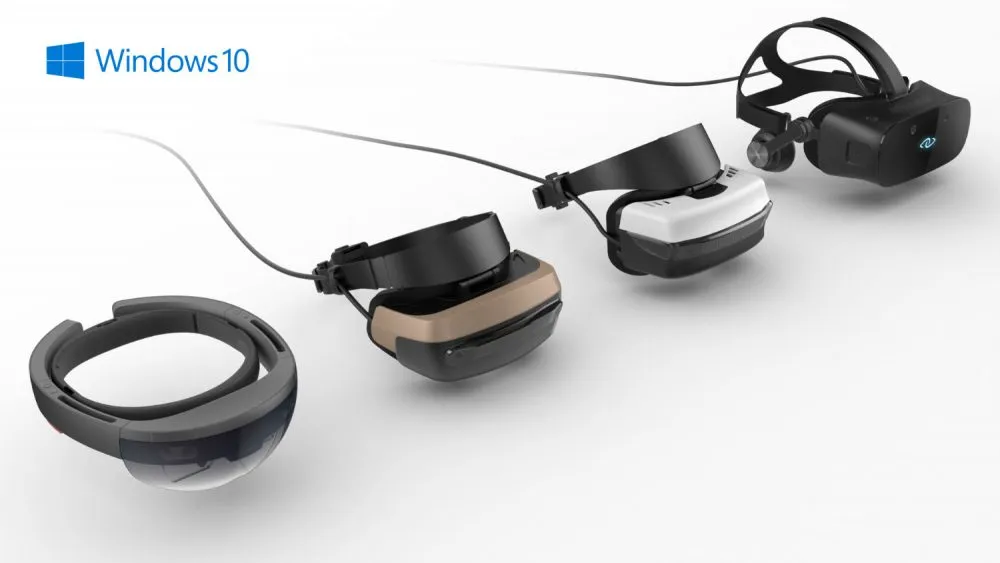Microsoft is looking to unify manufacturers around using Windows to power mixed reality headsets, with a plan to support HMDs featuring a wide range of specifications.
Next year, Microsoft plans to support headsets from manufacturers like Acer, ASUS, Dell, HP and Lenovo starting at just $300, and by the end of the year the tech giant plans for “the base minimum hardware requirements for holiday 2017 systems” to start with an “Integrated Intel® HD Graphics 620 (GT2) equivalent or greater DX12 API Capable GPU.”
Both these marks should dramatically lower the cost to bring a VR headset into your home that still offers full freedom of movement in any direction. The Rift starts at $600 while the roomscale Vive starts at $800, each of which require a PC with relatively expensive graphics cards to work right.
Microsoft at its Windows Hardware Engineering Community event (WinHEC) in Shenzhen, China, also announced a partnership with Chinese VR headset maker 3Glasses. The company plans to offer a headset in the first half of 2017 compatible with Windows 10 at the higher end of a range of specifications Microsoft will support. The specifications for the 3Glasses’ S1 headset are listed at 2880×1440 with a refresh rate of up to 120 Hz. The Rift and Vive operate at 2160 x 1200 and 90 Hz.
“We want a wide range of price points, wide range of specs, wide range of input, single developer platform, single developer surface area so the experiences work across the entire set,” said Alex Kipman, technical fellow of new device categories at Microsoft, in an interview with UploadVR. “You must at least be able to track in 6 degrees of freedom. That means to me 6 DoF tracking is the minimum requirement. After that it’s all about giving opportunity for partners and choice for customers. That’s inclusive of FOV, refresh rate, resolution and we abstract all that to developers. That is true from an input perspective from 3 DoF to 6 DoF to everywhere between.”
According to Kipman, Microsoft is looking to do with its operating system what Oculus and Steam might not be able to from their place as applications.
“This is the power and benefit of being an operating system. If you’re just an application, and at the end of the day that’s all Oculus or Valve or those things are, you’re an application running in the context of an operating system, you can’t reconcile the input stack,” Kipman said. “On the other hand, if you’re the people as an operating system, that intercept all of those calls, you can come up (and we have) with a homogenized API surface area that to a developer is just more events driven. You just understand the action that was taken, you don’t necessarily understand where it came from.”
The idea is that Microsoft will provide “a consistent interface with a single store for customers,” according to a blog post by Terry Myerson, executive vice president of the Windows and Devices Group at Microsoft. Meanwhile, developers will target a single input stack that would allow their apps to support a wide range of methods Microsoft intends to support for interacting with mixed reality, including controllers that can only move in a few directions, controllers that can move in any direction, gamepads like the Xbox controller, keyboard, mouse and eventually “gaze, gesture and voice” input.
When asked whether the Rift and Vive would be able to access apps purchased from the Microsoft store, Kipman said “it’s up to them.”
“Bifurcating platforms and bifurcating experiences doesn’t help developers and it doesn’t help customers with choice,” Kipman said. “The invitation remains open for any headset that is capable of doing 6 DoF, inclusive of HTC and Oculus, but they have to take me up on my invitation.”
Microsoft said it plans to offer HMD developer kits at the Game Developers Conference in San Francisco next year. You can sign up to show your interest at http://aka.ms/IWantMR. Kipman declined to say whether the kits would be free or cost money.





























